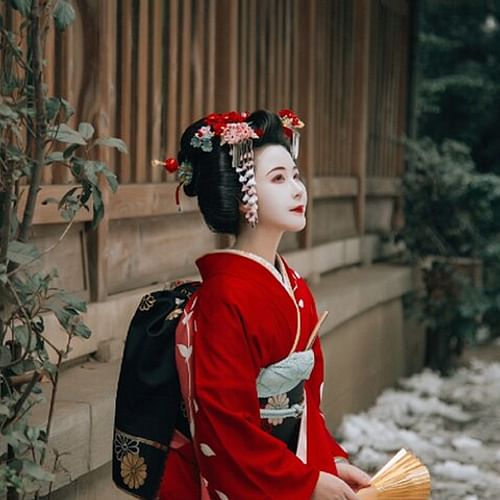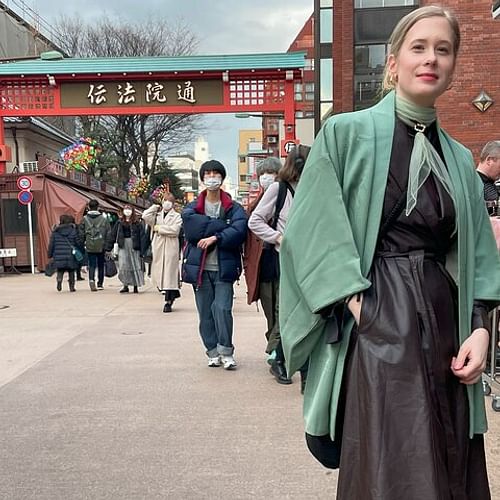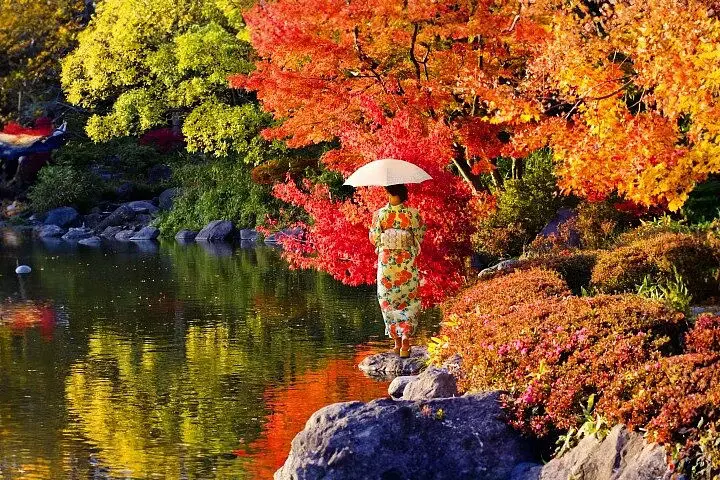The kimono, a traditional Japanese garment, is more than just a piece of clothing; it is a symbol of Japan's rich cultural heritage and a true work of art. With a history dating back over a thousand years, the kimono has evolved from a simple, everyday garment to a highly sophisticated and elegant dress worn for special occasions and ceremonies. Each kimono tells a unique story through its intricate patterns, vibrant colors, and exquisite craftsmanship, reflecting the wearer's age, marital status, and social position. As you explore the world of kimonos, you'll discover a fascinating glimpse into Japan's past and present, and a deep appreciation for the artistry and tradition woven into every fold of this iconic garment.
3 tours & activities found
Sort by price

Kyoto・1 day
From $ 37.58
per person

Tokyo・2 hour
From $ 137.78
per person

Tokyo・2 hour
From $ 225.46
per person
Kimonos are characterized by their distinctive T-shaped silhouette, wide sleeves, and long, flowing length. They are typically made from a single bolt of fabric, measuring about 12 meters long and 36 centimeters wide. The fabric is carefully cut, sewn, and decorated to create a garment that is both beautiful and practical. Some key features and elements of kimonos include:
Wearing a kimono is an art form in itself, requiring skill, patience, and attention to detail. Many Japanese people take classes to learn how to properly wear and care for their kimonos, and professional kimono dressers are often hired for special events and ceremonies.
For those interested in experiencing kimonos firsthand, Japan offers numerous opportunities to explore this fascinating aspect of Japanese culture. Visitors can attend kimono shows and exhibitions, participate in kimono-wearing workshops, or even rent a kimono for a day to stroll around historic districts like Kyoto's Gion or Tokyo's Asakusa.
Many traditional Japanese inns (ryokan) and hot spring resorts (onsen) provide kimonos for their guests to wear during their stay, offering a chance to experience the comfort and elegance of this iconic garment in a relaxed setting.
Step into the enchanting world of kimonos by booking your kimono experience in Japan today. Whether you choose to admire these stunning garments from afar or immerse yourself in the art of wearing one, exploring the world of kimonos promises to be a captivating journey through Japan's rich cultural tapestry. Discover the beauty, artistry, and tradition woven into every thread, and let the timeless elegance of the kimono transport you to a realm of grace and refinement.



77
tours & activities
29
tours & activities
22
tours & activities
17
tours & activities
16
tours & activities
8
tours & activities
8
tours & activities
6
tours & activities
6
tours & activities
6
tours & activities
5
tours & activities
5
tours & activities
4
tours & activities
3
tours & activities
3
tours & activities
2
tours & activities
2
tours & activities
1
tours & activities
1
tours & activities
1
tours & activities